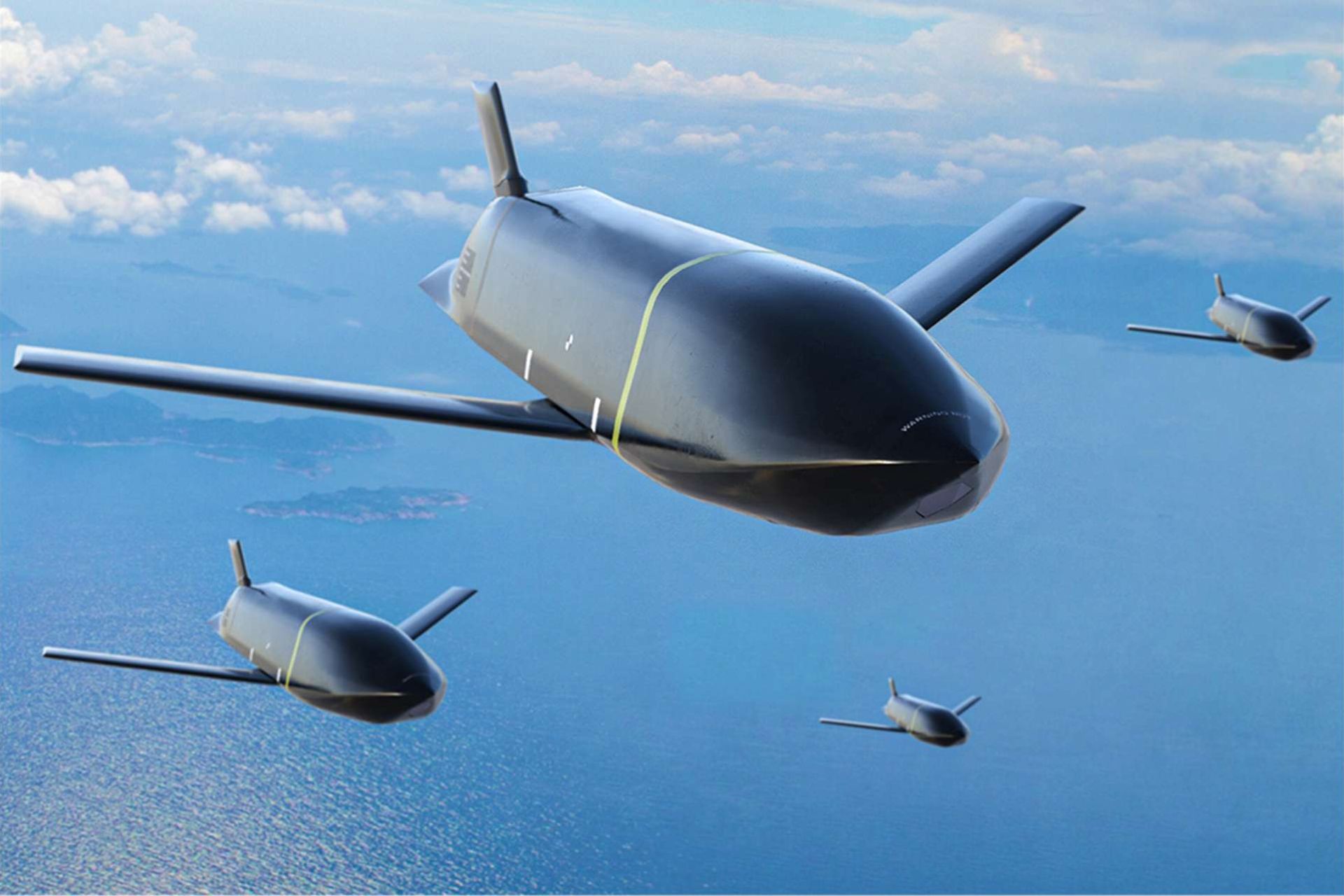Breaking News
Advanced LRASM Finds New Home on F-15E/EX fighter aircraft in Lockheed Martin Collaboration.
According to information published the US Gov on January 28, 2025, the U.S. Naval Air Systems Command (NAVAIR) has announced its intention to award a sole-source contract to Lockheed Martin Corporation's Missiles and Fire Control division for the integration and testing of the AGM-158C-1 Long-Range Anti-Ship Missile (LRASM) on the F-15E and F-15EX aircraft platforms.
Follow Army Recognition on Google News at this link

Artist rendering of the Long-Range Anti-Ship Missile. (Picture source: Lockheed Martin)
The missile incorporates a low-observable airframe to reduce radar cross-section, advanced coatings, and sensors such as passive radio frequency and electro-optical/infrared. These enable the weapon to identify and engage targets with precision, even in GPS-denied environments. It also features a penetration and blast-fragmentation warhead optimized for heavily defended naval targets, with a range exceeding 300 nautical miles, ensuring that launch platforms remain safely out of reach of enemy defenses.
Integrating this weapon into the F-15E and F-15EX involves substantial technical modifications. These aircraft, known for their multirole capabilities, will require updates to weapon hardpoints, pylons, and release mechanisms to accommodate the LRASM’s size and weight. Additionally, modifications to avionics and mission computers are necessary to incorporate the missile’s Universal Armament Interface (UAI). This interface allows for seamless communication between the missile and the aircraft’s systems, enabling real-time target data exchange and ensuring rapid adaptability for future weapon systems.
The F-15E Strike Eagle, equipped with the APG-82 AESA radar, offers advanced targeting and detection capabilities, while the F-15EX’s open mission systems architecture allows for streamlined integration of cutting-edge technologies. These attributes make the F-15E/EX platforms ideal candidates for hosting the LRASM, complementing their ability to carry a wide range of munitions and conduct long-range operations.
The integration process involves extensive software updates, including fire control systems to manage the LRASM’s advanced targeting capabilities. Sensor fusion will enable the aircraft to effectively detect, track, and engage maritime threats at long distances. Rigorous testing, including captive carry flights and live-fire exercises, will be conducted to validate system compatibility and performance under operational conditions.
Once deployed, the LRASM-equipped F-15E and F-15EX will provide the U.S. military with a strategic advantage. The standoff range of the missile will allow these aircraft to engage high-value naval targets while minimizing exposure to enemy air defenses. The precision and autonomy of the LRASM make it particularly effective in scenarios where traditional surveillance and targeting systems are degraded or unavailable.
This initiative aligns with the U.S. Department of Defense’s strategy to enhance anti-ship capabilities, a critical component in countering peer adversaries’ expanding naval power. By integrating LRASM across multiple platforms, including the F-15E/EX, F/A-18E/F, B-1B, and P-8A Poseidon, the military achieves greater operational flexibility and distributed lethality.


























